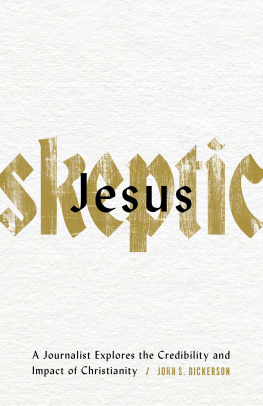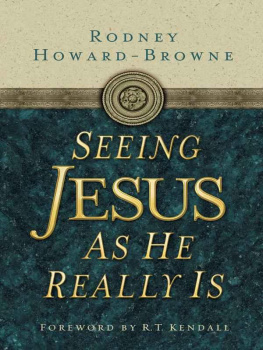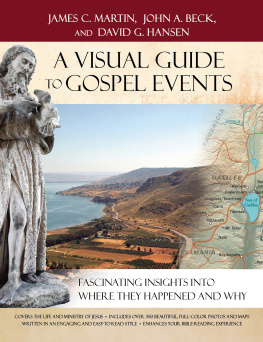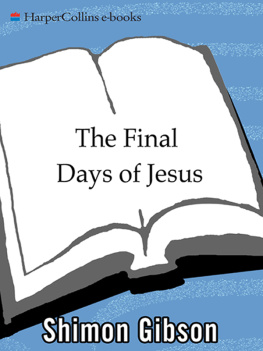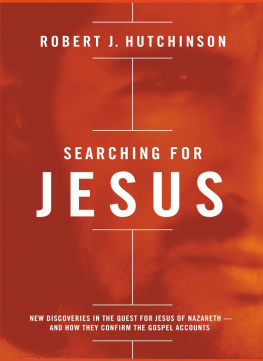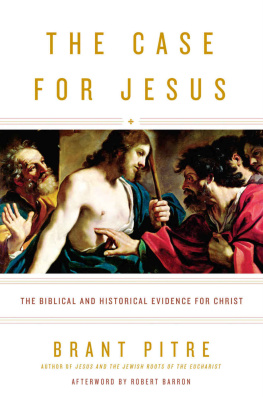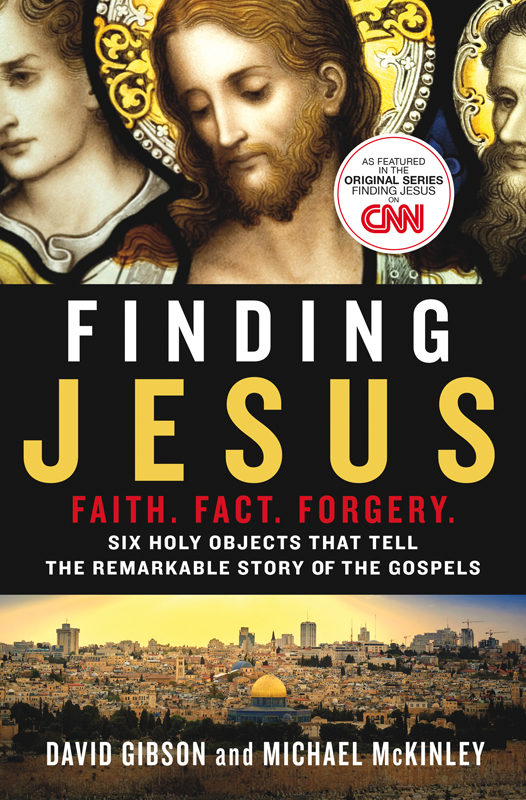Contents
Guide

The author and publisher have provided this e-book to you for your personal use only. You may not make this e-book publicly available in any way. Copyright infringement is against the law. If you believe the copy of this e-book you are reading infringes on the authors copyright, please notify the publisher at: us.macmillanusa.com/piracy.
For our families
The following experts appeared in the CNN series Finding Jesus , and we have used quotations from their interviews throughout this book: Nicholas Allen, Rev. Bruce Chilton, Kate Cooper, Annelise Freisenbruch, Camil Fuchs, Rabbi Joshua Garroway, Oded Golan, Mark Goodacre, Mark Guscin, Israel Hershkovitz, Tom Higham, Shimon Ilani, John Jackson, Matthew Kalman, Georges Kazan, Noel Lenski, Fr. James Martin, Byron McCane, Candida Moss, Elaine Pagels, Jonathan Pagis, Joan Taylor, and Ben Witherington III.
All Scripture references in the book are taken from the New Revised Standard Version of the Bible.
Last, in keeping with current practices, we have used BCE (Before the Common Era) and CE (Common Era) throughout the book, rather than BC and AD.
The question must be posed in the present tense because, for believers, Jesus is God and he exists in the here and now every bit as much as he ever did: Jesus Christ, the same yesterday, today, and forever, as the New Testament says. To be a Christian is to have a relationship with a Jesus who is alive in heaven and with us at every moment of every day.
Yet Jesus is also profoundly present for todays agnostics and even die-hard skeptics, who are engaged with Jesus of Nazareth, in their own way, almost as devoutly as Christians are.
Just look at the reaction to any new artifact excavated from the Holy Land, or every scrap of papyrus that emerges from the sands of Egypt or the sometimes shadowy antiquities markets that operate throughout the West. Each is accompanied by astounding claims and a wave of boldface headlines, and each prompts a new round of global fascination with a man who died two thousand years ago, crucified by the Romans on a dusty hill near Jerusalem.
It was a fate inflicted on countless others deemed enemies of the state. Yet Jesus was different. For believers, he rose from the tomb on the third day, on that first Easter morning, bringing a message of eternal life and galvanizing a small band of followers who would go on to create a church and spread a faith that would reach every corner of the globe. Those who dismiss such claims must contend with the reality of Jesuss afterlife in this world, with the historic forces he unleashed, forces that remain undiminished even in this supposedly secular age. Its not surprising that the entry on Jesus in the open-source encyclopedia Wikipedia is the fifth-most-edited page among the more than thirty million articles on the site.
Everyone seems to have a stake in who Jesus is, and in what we should believe about himbut to prove their claims, they have to know who Jesus was.
Exploring that mystery, and that history, is the goal of this book and the CNN series Finding Jesus. It is a fascinating adventure into theology; archeology; our contemporary preoccupations with sex, religion, and the meaning of life; and our age-old love of relics. In six chapters we examine six relicsor artifacts, if you willthat provide a window onto the past, opening up our understanding of first-century Judea, of the men and women around Jesus, and of those who later followed the man they believed to be the Messiahthe Christ ( Christos , in Greek, or the anointed one).
These investigations take us deep into history, and modern scholarship on the Bible, and demonstrate again that finding the truth about Jesus is no easy task. It never has been. When Jesus was brought before Pontius Pilate, the Roman governor of Judea wasnt sure what to make of him. Are you the King of the Jews? Pilate asked him.
Jesus said, You say so. But when he was accused by the chief priests and elders, he did not answer.
Then Pilate said to him, Do you not hear how many accusations they make against you?
But he gave him no answer, not even to a single charge, so that the governor was greatly amazed.
This famous exchange, with slight variations, is present in all four canonical gospelsMatthew, Mark, Luke, and Johnwhich recount the life, and death, of Jesus. Yet the gospels are not biographies in the commonly understood sense of the word. They tell the story of Jesus, but above all with the aim of conveying the why of his life (the message of his teachings) as much as the who, what, when, and where. That is why different gospels cover different aspects of Jesuss life: Two give versions of his birth; two do not. Only one mentions anything about Jesus between his life as an infant and his emergence as a public figure at about the age of thirty. They vary in details and sometimes recount the same stories in different ways, or even contradict one another on particular details.
For centuries this was not much of a problem. The life of Christ was taken for granted. The different versions just meant preachers had a deeper well of material upon which to draw, and a greater reservoir of meaning to explore. Elaboration, even embroidering the stories, was not necessarily a bad thing. Bible stories, and the myriad images in stone and on canvas that depict them, could lead people to the essence of the faith. Christianity was mainly a matter of belief, and thats what believers argued aboutoften with deadly results. Yet when the wars of religion that raged across Europe in the seventeenth century gave way to the Age of Reason in the eighteenth century, everything changed. Tradition was subjected to rational inquiry, dogma to scientific scrutinyand if they didnt withstand the Enlightenments standards, they were tossed out.
The stories about Jesus in the gospels were a special focus. Thus was born the so-called First Quest for the historical Jesus, an endeavor led by German Protestants who brought the critical eye of modern scholarship to holy writ, and wound up rewriting the New Testament in ways that often scandalized the faithful. Everything that could not be proven was called into question, and much of what had mattered to believers for centuries was cast aside. Perhaps the most famous, and graphic, example of this approach is the Jefferson Bible, a version of the New Testament that Thomas Jefferson, an accomplished child of the Enlightenment, created in his later years by (literally) cutting out all the Scripture passages about miracles and supernatural claims and leaving Jesuss ethical teachings, which Jefferson thought were just fine.
The First Quest effectively ended in 1906, with the publication of a volume that gave the phenomenon its name, Albert Schweitzers The Quest of the Historical Jesus . Schweitzer, a Lutheran who later won renown as a humanitarian in West Africa and was awarded the Nobel Peace Prize in 1952, ultimately concluded that the historical Jesus will remain a stranger and an enigma to our time.
Yet Jesus would not be dismissed so easily. A 1953 lecture by another German scholar, Ernst Ksemann, titled The Problem of the Historical Jesus, launched what is called the Second Quest, one that brought textual criticism and other modern scholarship tools to attempt yet again to find solutions to this problem. The Second Quest was bolstered by a number of remarkable archeological finds that did for the Bible what the 1922 discovery of the tomb of King Tutankhamen did for all things Egyptian. Suddenly, biblical archeology was hot.



